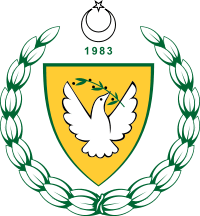Turkish Cypriot State

In order to find a solution to the Cyprus dispute, which started in 1963, numerous plans and meetings in international arena were organized and eventually United Nations determined the solution to be "bi-zonal and bi-communal federation" based on the political equality of Greek Cypriot and Turkish Cypriot people. According to United Nations' 2004 Annan Plan for the reunification of Cyprus, the proposed United Cyprus Republic would consist of two constituent states, the Greek Cypriot State and Turkish Cypriot State, which would be governed by Greek Cypriots and Turkish Cypriots respectively.
Law of Necessity
Since the implementation of the Plan was dependent on its approval by both communities,[1] Greek-Cypriots and Turkish-Cypriots were aware before the referendum that the rejection of the United Nations' Plan by one side would make it null and void and the status quo ante (abnormal situation) in the Cyprus Island would continue. Turkish Cypriots voted for the Plan whereas Greek Cypriots rejected it. The United Nations' 2004 plan, according to its own terms, became null and void. By the rejection of the plan, the establishment of a new state of affairs in the Island and the termination of the abnormal situation was prevented.[2]
Though the United Nations' plan failed, it has some consequences in favor of Turkish Cypriots and their administration via "law of necessity" according to international law. After the referendum, most of the major international organisations (EU, UN via UN SG, OIC etc.) declared support to Turkish Cypriots.[3][4]
Northern Cyprus started to become members of international organizations under the name "Turkish Cypriot State". It is under this name that the Organisation of Islamic Cooperation and the Economic Cooperation Organization recognises the Turkish Republic of Northern Cyprus.
Turkish Cypriot State in Organisation of Islamic Countries
In June 2004, Northern Cyprus became an observer member of Organisation of Islamic Countries (OIC) under the name "Turkish Cypriot State".[5] According to OIC, the settlement to the Cyprus Dispute is based on the inherent constitutive power of the Greek Cypriot and Turkish Cypriot peoples, their political equality and co-ownership of the Cyprus Island.[6]
Turkish Cypriot State in Economic Cooperation Organisation
In October 2012, Northern Cyprus became an observer member of Economic Cooperation Organisation under the name "Turkish Cypriot State". The first meeting of ECO that Turkish Cypriot State participated as observer country is the 20th Meeting of Council of Ministers (COM) of ECO [7]
See also
References
- ↑ Annan Plan, Annex IX, Article 1.2: "Should the Foundation Agreement not be approved at the separate simultaneous referenda, or any guarantor fail to sign the Treaty on matters related to the new state of affairs in Cyprus by 29 April 2004, it shall be null and void, and have no legal effect."
- ↑ Perceptions Winter 2004-2005
- ↑ Commission|accessdate=19 September 2011European Commission:"The European Commission would like to warmly congratulate Turkish Cypriots for their "Yes" vote. The Commission is ready to consider ways of further promoting economic development of the northern part of Cyprus"
- ↑ Secretary-General of the Organization of Islamic Countries (OIC) Mr. Belkeziz 2004: "It is our duty to put an end to the isolation of Turkish Cypriots."
- ↑ http://www.mfa.gov.tr/data/DISPOLITIKA/KIBRIS/234.pdf
- ↑ The Annual Coordination Meeting of Ministers of Foreign Affairs of the OIC Member States UN Headquarters, New York, 28 September 2012 Final Communique
- ↑ Turkish Cypriot State
| ||||||||||||||||||||
| ||||||||||||||||||||||||||||||||||||||||||||||||||||||||||||
